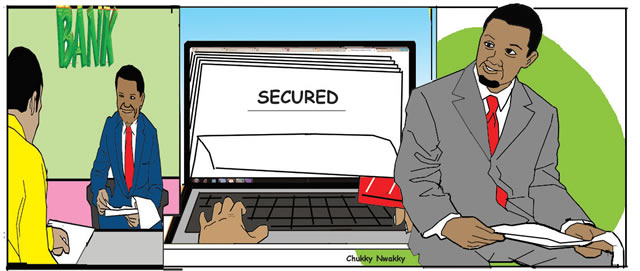
Cybercriminals are constantly devising new ways to exploit vulnerabilities and steal sensitive information. DANIEL ADAJI outlines ways to safeguard your bank account and mobile wallet.
In today’s rapidly evolving digital landscape, the importance of robust mobile wallet security cannot be overstated. With the surge in the use of digital wallets, there has been a corresponding increase in the activities of cybercriminals, who are constantly on the lookout for vulnerabilities to exploit. The convenience offered by these digital payment methods is undeniable, but it also presents a lucrative target for those with malicious intent.
The stories are all too common: unsuspecting individuals falling prey to sophisticated scams, resulting in the loss of significant sums of money. These criminals employ a variety of tactics to breach digital defences, often capitalising on the smallest oversight in security practices.
It is a stark reminder that in the digital realm, our financial well-being is perpetually at risk from those who wish to unlawfully enrich themselves.
It is imperative, therefore, that each individual take proactive steps to safeguard their digital assets. This begins with a thorough understanding of the potential risks associated with digital transactions and extends to the implementation of strong security measures. Regularly updating passwords, enabling two-factor authentication, and monitoring account activity are just a few of the many actions that can significantly enhance security.
Moreover, staying informed about the latest security threats and understanding the common tactics used by cybercriminals can provide an additional layer of protection. Education on digital safety should be ongoing, as the methods used by these criminals are constantly evolving. Being vigilant and cautious with every transaction, no matter how small, is essential.
In essence, while technology companies and financial institutions strive to fortify their systems against unauthorised access, the onus of digital safety ultimately falls on the user. It is a personal responsibility that must be taken seriously, for the repercussions of neglect can be dire.
By adopting a mindset that prioritises security, individuals cannot only protect their financial interests but also contribute to the overall safety of the digital ecosystem.
As we embrace the convenience of digital wallets, we must also embrace the responsibility that comes with it. Vigilance, education, and the implementation of robust security practices are the pillars upon which the safety of our digital finances rests.
It takes collective effort that starts with individual action. Only through such concerted efforts, we can hope to stay one step ahead of those who seek to cause harm in the digital world.
Your digital safety is not only a right but also a responsibility that you have towards yourself and others.
To keep your digital wallets safe, follow these essential security practices:
Use strong passwords
Create unique, complex passwords for each financial account. Avoid using easily guessable information like birthdays or common phrases. A strong password typically includes a mix of uppercase and lowercase letters, numbers, and special characters.
Enable two-factor authentication
Whenever possible, enable 2FA for your accounts. This adds an extra layer of security by requiring a second verification method (such as a text message or authentication app) in addition to your password.
Regularly monitor your accounts
Check Your Statements
Review your bank and credit card statements regularly. Look for any unauthorised transactions or suspicious activity. Report discrepancies immediately to your financial institution.
Set Up Alerts
Most banks and mobile wallet apps allow you to set up transaction alerts. Receive notifications for large withdrawals, international transactions, or any other unusual activity.
Secure your devices
Update software
Keep your operating system, apps, and security software up to date. Updates often include patches for known vulnerabilities.
Install antivirus software
Use reputable antivirus software to protect against malware and phishing attacks. Regularly scan your devices for threats.
Lock your devices
Set up a PIN, password, or biometric lock (such as fingerprint or face recognition) on your smartphone and other devices. This prevents unauthorised access.
Be cautious online
Avoid public Wi-Fi for sensitive transactions
Public Wi-Fi networks are vulnerable to interception. Avoid conducting sensitive financial transactions while connected to public Wi-Fi.
Beware of phishing emails and texts
Cybercriminals often impersonate banks or financial institutions via email or text messages. Be sceptical of unsolicited messages asking for personal information or urging urgent action.
Use trusted apps and websites
Download Apps from Official Stores: Only download banking and wallet apps from official app stores (such as Google Play or the Apple App Store). Avoid third-party sources.
Check Website URLs
Before entering any sensitive information, verify that the website’s URL begins with “https://” (the “s” stands for secure). Look for the padlock icon in the address bar.
Secure your mobile wallet
Set up biometric authentication
If your mobile wallet supports it, enable biometric authentication (fingerprint or face recognition). This adds an extra layer of security.
Regularly review transactions
Check your mobile wallet transactions frequently. Report any unauthorised charges promptly.
By following these best practices, you can significantly reduce the risk of financial fraud and protect your bank account and mobile wallet. Remember that vigilance and proactive measures are essential in the digital age. Stay informed about the latest security threats and adapt your practices accordingly. Your financial well-being depends on it!











